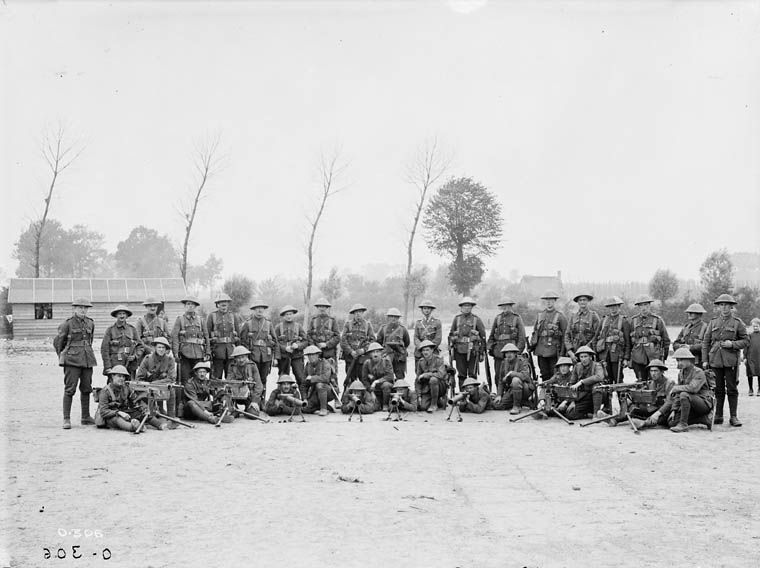Leo Clarke: The Relentless Warrior of the Somme
- canadaswarpath
- Mar 17
- 4 min read
War doesn’t care who you are. It doesn’t care where you’re from, what you believe in, or what your plans were before the bullets started flying. War tests men, and only a few rise above the chaos to etch their names into history. One of those men was Leo Clarke, a surveyor from Winnipeg, Canada, who found himself in the trenches of the Western Front, staring down death and defying the odds.
Clarke wasn’t some battle-hardened veteran when he set foot in Europe. He was just another young man answering the call to serve. But what set him apart was what he did in the heat of combat, when everything was on the line, and there was no one else to turn to. His story isn’t just about one battle or one moment of heroism. It’s about guts, grit, and the unshakable will to win.

Early Life: A Regular Guy from Winnipeg
Leo Clarke was born on December 1, 1892, in Waterdown, Ontario. His family had roots in England, but like so many others, they came to Canada looking for a better life. When he was still a kid, they packed up and moved to Winnipeg, settling on Pine Street. It was a modest place, but it was home.
Clarke wasn’t born with a rifle in his hands. He was an average guy, going through school at Argyle and Gladstone, figuring out life like anyone else. Eventually, he found work as a surveyor with the Canadian National Railway. It was steady, honest work, and maybe if the world had stayed quiet, he would’ve lived a quiet life. But history had other plans.
Joining the Fight
By 1914, the world was on fire. The Great War had begun, and thousands of young Canadians were stepping up. Clarke was one of them. In February 1915, at 22 years old, he enlisted in the 27th Battalion, Canadian Expeditionary Force, in Winnipeg.
Military life wasn’t easy, but Clarke adapted fast. He learned the trade of war, how to fight, how to survive, and how to keep his cool under pressure. Eventually, he was transferred to the 2nd Battalion (Eastern Ontario Regiment), a unit that would soon find itself in the deadliest battles of the war.

The Battle of the Somme: Clarke’s Defining Moment
September 1916. The Battle of the Somme had been raging for months. The British and their allies were pushing hard against German defenses, and it was brutal. The landscape was nothing but mud, barbed wire, and bodies.

Clarke’s battalion was thrown into the meat grinder near Pozières, a crucial sector where every inch of ground had to be fought for. The Germans weren’t about to give up, and they counterattacked with everything they had.
That’s when Clarke’s moment came.
His unit had just taken a trench from the enemy, but the Germans weren’t going to let it go without a fight. Before Clarke even had a chance to breathe, around 20 German soldiers launched a counterattack. Outnumbered and low on ammunition, most men would’ve fallen back. But Clarke wasn’t most men.
He didn’t retreat. He didn’t hesitate.
Clarke grabbed his revolver and went to work. He shot one German, then another. When his pistol ran dry, he grabbed a captured rifle and kept fighting. One by one, the enemy fell.
Some of them tried to rush him, but Clarke wasn’t going down easy.
By the time the smoke cleared, Clarke had taken out all 20 Germans, alone.
It wasn’t just bravery, it was raw, unshakable determination. Clarke had held the trench and saved his unit from being overrun. That’s the kind of action that earns a man the Victoria Cross, the highest military honor in the British Empire.

A Warrior’s End
But war is merciless.
Just weeks after his heroic stand, Clarke was hit again, this time by something he couldn’t fight off. On October 19, 1916, he was caught in a trench collapse, buried under the wreckage. He was pulled out, barely clinging to life, but the injuries were too severe.
Leo Clarke died from his wounds, never knowing that his name would go down in history.
Legacy: The Street of Heroes
Some men are remembered in books, but Clarke’s legacy is written in the streets of his hometown. Pine Street in Winnipeg, the place where Clarke grew up, was also home to two other Victoria Cross recipients: Frederick William Hall and Robert Shankland. Three war heroes from the same street.
The city made sure people wouldn’t forget. Pine Street was renamed Valour Road, a permanent reminder of what courage looks like.

Leo Clarke wasn’t born a warrior, but when the moment came, he became one. He didn’t fight for glory or recognition. He fought for his brothers-in-arms, for the mission, and for survival. That’s what separates the good from the great.
In war, you don’t get to choose your battles. You only get to choose how you respond. Clarke made his choice, he stood his ground, fought like hell, and became a legend.
And legends never die.









Comments